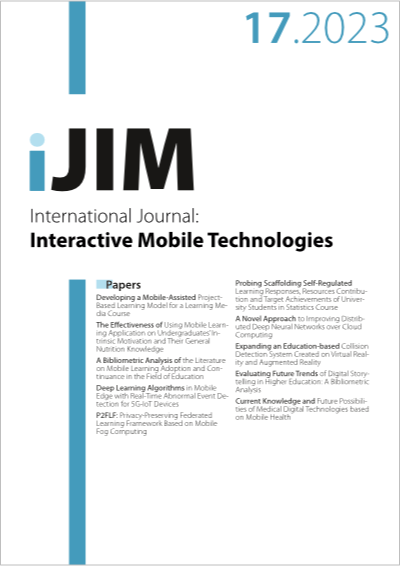Expanding an Education-based Collision Detection System Created on Virtual Reality and Augmented Reality
DOI:
https://doi.org/10.3991/ijim.v17i17.42831Keywords:
augmented reality (AR); User Interfaces (UIs); collision detection algorithm (CDA); virtual reality (VR);Abstract
Virtually enhancing the real environment with augmented reality (AR) has lots of potential but is still in the early stages of research. The definition of appropriate user interfaces (UIs) is complicated by the absence of standards and the growing complexity of interaction opportunities. Several educators have discussed the advantages of XR for students as well as the use of AR and VR in the laboratory. Utilizing AR and VR to create immersive learning experiences is challenging since it takes time and effort to construct instructional AR and VR tools, apps, or educational settings. Because of this, even though these new technologies are said to help today’s students, their implementation in education may be postponed or stopped. In this research, the usage of XR technologies in education has been investigated through the examination of websites, technical papers, reports, and mobile app stores. This research study proposes a collision detection algorithm (CDA) utilizing machine learning. In order to aid in the identification of the meeting of two objects in the virtual environment, the collision detection method is employed in applications that support augmented reality and simulated reality technologies. In this study, mean, standard deviation and error parameters were utilized to analyze competitions that were related to augmented reality and virtual reality.
Downloads
Published
How to Cite
Issue
Section
License
Copyright (c) 2023 Harish Dutt Sharma, Yogesh Misra, Sumit Kumar, B. Madhav Rao, Bhupati

This work is licensed under a Creative Commons Attribution 4.0 International License.


